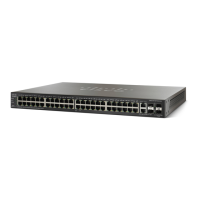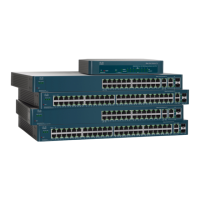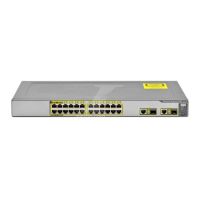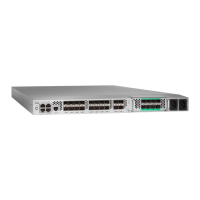Port Management
Link Aggregation
193 Cisco 500 Series Stackable Managed Switch Administration Guide
10
However, there are cases when one link partner is temporarily not configured for
LACP. One example for such case is when the link partner is on a device, which is
in the process of receiving its configuration using the auto-config protocol. This
device's ports are not yet configured to LACP. If the LAG link cannot come up, the
device cannot ever become configured. A similar case occurs with dual-NIC
network-boot computers (e.g. PXE), which receive their LAG configuration only
after they bootup.
When several LACP-configured ports are configured, and the link comes up in one
or more ports but there are no LACP responses from the link partner for those
ports, the first port that had link up is added to the LACP LAG and becomes active
(the other ports become non-candidates). In this way, the neighbor device can, for
example, get its IP Address using DHCP and get its configuration using auto-
configuration.
Setting LACP Parameter Settings
Use the LACP page to configure the candidate ports for the LAG and to configure
the LACP parameters per port.
With all factors equal, when the LAG is configured with more candidate ports than
the maximum number of active ports allowed (8), the device selects ports as
active from the dynamic LAG on the device that has the highest priority.
NOTE The LACP setting is irrelevant on ports that are not members of a dynamic LAG.
To d e f i n e t h e L A C P s e t t i n g s :
STEP 1 Click Port Management > Link Aggregation > LACP.
STEP 2 Enter the LACP System Priority. See LACP Priority and Rules.
STEP 3 Select a port, and click Edit.
STEP 4 Enter the values for the following fields:
• Port—Select the port number to which timeout and priority values are
assigned.
• LACP Port Priority—Enter the LACP priority value for the port. See Setting
LACP Parameter Settings.
• LACP Timeout—Time interval between the sending and receiving of
consecutive LACP PDUs. Select the periodic transmissions of LACP PDUs,
which occur at either a Long or Short transmission speed, depending upon
the expressed LACP timeout preference.

